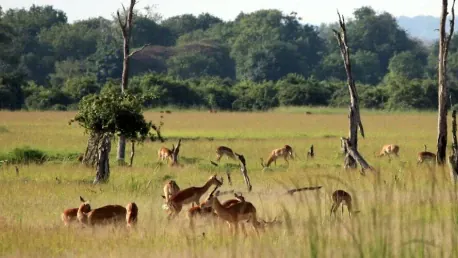Zambia is bracing for an extended electricity crisis as the nation grapples with a severe drought that has drastically reduced the water levels in its hydropower dams. The drought, declared a national disaster in February, has left the country’s primary source of electricity—hydropower—in a precarious state, leading to significant power shortages.
Impact on Electricity Supply
The prolonged drought has left Zambia’s hydropower capacity in a dire state, severely impacting the country’s electricity supply. Over 80% of Zambia’s electricity is generated from hydropower, with the Kariba Dam operating at merely 10% capacity due to the critically low water levels. Another key facility, the Itezhi-Tezhi hydropower dam, has also scaled down its operations, aggravating the power crisis.
Extended Power Cuts
Starting September 1, the government has announced plans to extend power cuts from 14 to 17 hours daily. The end date for these extended outages remains unspecified, raising concerns among residents and business owners alike. The power cuts are a direct result of the dwindling water levels in crucial hydropower dams, further stressing the nation’s electricity resources.
Economic Repercussions
The extended power cuts are expected to take a toll on business operations, particularly impacting small enterprises such as butcheries, hair salons, welding shops, and barber shops. These businesses are being forced to adapt by either altering their working hours or investing in alternative power sources, including rechargeable equipment and solar panels. The economic repercussions are significant, with stakeholders urging the government to take immediate action to mitigate the impact.
Mitigation Efforts
In response to the crisis, the government has outlined a plan to import additional power from South Africa and the regional Southern African Power Pool. However, a proposed steep increase in electricity tariffs to cover the costs of these imports was blocked due to concerns about potential economic fallout, including job losses and a higher cost of living. The government remains in a challenging position, balancing the need for more power with the economic impact on its citizens.
Economic Projections
The International Monetary Fund (IMF) has revised Zambia’s economic growth forecast for the year from 4.7% down to 2.3%, citing the detrimental effects of the drought on both food production and electricity generation. The power shortages and agricultural impact are creating a perfect storm, putting immense pressure on the already fragile economy.
Social Implications
The social implications of the electricity crisis are profound, particularly for the over half of Zambia’s population that lives below the poverty line. Food insecurity is on the rise, exacerbated by the drought and the resultant power shortages. Vulnerable communities are especially at risk, highlighting the urgent need for targeted relief measures to alleviate their plight.
Overarching Trends and Consensus
The ongoing drought in Zambia is at the heart of a cascading series of challenges affecting electricity supply, economic stability, and food security. There is a consensus that immediate, coordinated efforts are necessary to mitigate the impact. Securing alternative electricity sources and ensuring that tariff adjustments do not lead to broader economic distress are crucial steps the government must take.
Conclusion
Zambia is gearing up for a prolonged electricity crisis as it faces a severe drought, which has drastically diminished water levels in its hydropower dams. The drought, declared a national disaster in February, has severely impacted the country’s primary electricity source, leading to significant power shortages. As the water levels continue to fall, the reliance on hydropower has brought the nation to a critical juncture, challenging both the economy and daily living. Zambia has traditionally relied heavily on its abundant water resources to generate electricity, which supports industries, businesses, and homes. However, this unprecedented drought has disrupted that balance, creating an urgent need for alternative energy sources. Government officials and energy experts are now exploring other ways to meet the power demand, such as solar and wind power, while also contemplating possible energy imports. The crisis underscores the broader impacts of climate change, prompting discussions on the sustainability of current energy infrastructures and the need for more resilient systems.









